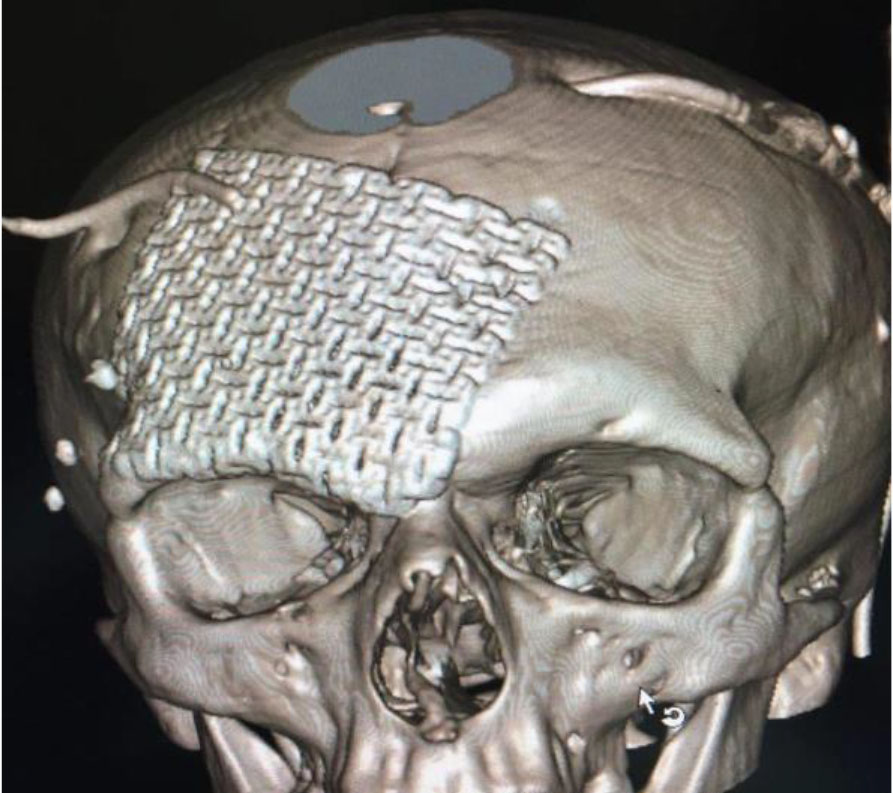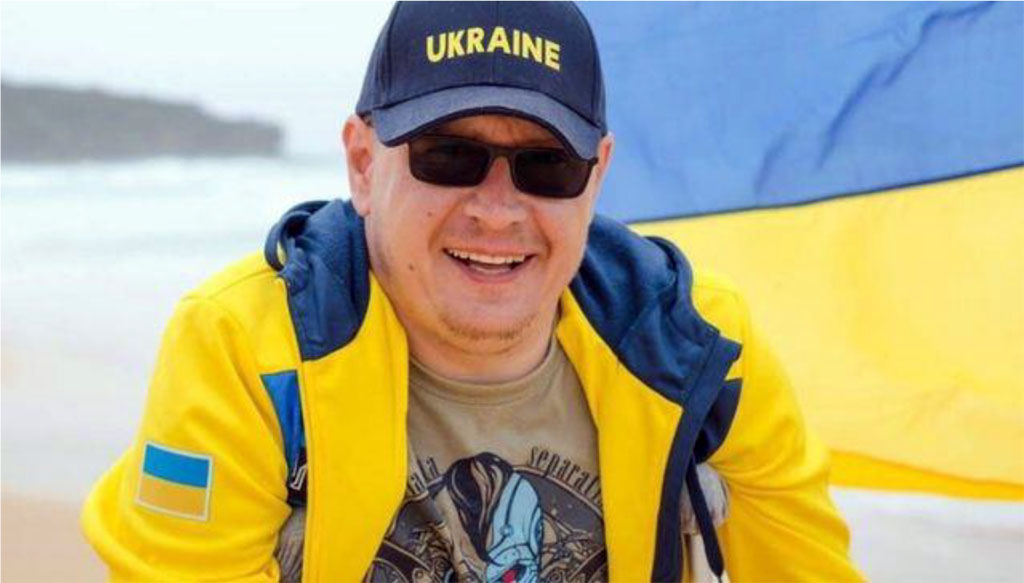- Home
- About the Journal
- Peer Review
- Editorial Board
- For Authors
- Reviewer Recognition
- Archive
- Contact
- Impressum
- EWG e.V.
Cite as: Archiv EuroMedica. 2022. 12; sp: e1. DOI 10.35630/2022/12/sp.iss.4
The article deals with the organizational and legal aspects of providing surgical care to Ukrainian military in the conditions of a full-scale war in Ukraine. It also analyzes organizational and legal management aspects of providing surgical care to wounded soldiers on the example of the activities run at the Mechnikov Regional Hospital of the Dnipropetrovsk Regional Council (or the Mechnikov Hospital for short) in Dnipro, Ukraine. The research object was selected due to the fact that this specialized civilian medical institution is the closest to the front line and is not directly subordinated to the Ministry of Defense of Ukraine. At the regional administration level, this medical institution belongs to the local self-government body, namely the Dnipropetrovsk Regional Council, and is financed by the local budget. During the period from 2014 until present, the medical staff of the hospital have saved the lives of tens of thousands of servicemen. Therefore, this experience is unique in the field of public relations in the system of civil health care institutions and requires the study of management and medical rescue techniques.
Keywords: health care management, surgical care, Ukraine, war, local self-government.
Justification of the problem. The issues of organizing the protection of Ukraine’s borders, along with the issue of medical support of the Armed Forces of Ukraine, have been the subject of scientific discourse in the fields of Medicine and Public Administration since 2014, after the annexation of Crimea and part of the eastern regions of Ukraine by the Russian federation. With the beginning of the full-scale war of Russia against Ukraine, that is, from February 24, 2022, this issue has gained extreme urgency and practical value [1], and is especially relevant as a public management problem in front-line administrative territories. Dnipropetrovsk region belongs to such territories, which determines the research interest of this study.
Analysis of previous studies. In the conditions of martial law, which was declared by the President of Ukraine Volodymyr Zelenskyi on the first days of Russia’s full-scale invasion of Ukraine, Ukrainian medical institutions suffered significant losses in all respects - from the destruction of buildings, which is usual for a war period, to the loss of personnel. Therefore, the issue of improving the management of medical care for the civilian population as well as servicemen of the Armed Forces of Ukraine is currently receiving considerable attention from both scholars and practitioners in the field of public management and administration. Among these researchers, most famous are V. Bily, S. Guryev, V. Zhahovsky, D. Karamyshev, V. Mikhalchuk, Ya. Radysh, G. Roschin [2; 3; 4], and many others.
Research methods. The research is based on the study of archival and statistical materials of the Mechnikov Hospital. This medical institution is a multidisciplinary hospital located the closest to the front line in the central-eastern region of Ukraine. Since 2014, structurally and functionally, the hospital has been operating as a multidisciplinary surgical center. The hospital provides various types of medical assistance to injured soldiers who are brought to the hospital by mobile hospital vehicles, "Hospitallers" medical battalion teams, and emergency medical teams [5]. Information materials and photos presented in the article are taken from open access sources and the Internet.
The aim of the study is to determine special features and challenges in the work of Ukrainian medical staff of a civilian hospital under martial law.
The Mechnikov Hospital is one of the oldest medical institutions in Ukraine. The hospital was founded on May 11, 1798 [6]. Nowadays, the hospital has 40 in-patient specialized departments with 1,175 beds.
![Fig. 1. Photo of the Therapeutic Department building of the Mechnikov Hospital (photo from the web page[6])](artikel-4-bild-1.jpg)
Fig. 1. Photo of the Therapeutic Department building of the Mechnikov Hospital (photo from the web page[6])
Before the Russian invasion, over 35,000 patients received highly qualified in-patient medical care in various departments of the hospital annually. The Hospital performed about 15,000 surgical interventions each year, 80% of which were complex emergency and planned surgical interventions. Every year over 257,000 residents of the region and nearby regions of Ukraine registered for outpatient appointments with the doctors of the Advisory polyclinic department, which is a structural unit of the Mechnikov Hospital. The structure of the Hospital includes unique departments, such as:
Before the full-scale invasion, the hospital's workforce consisted of 2,208 employees, including 452 doctors, 775 junior medical specialists, and 467 junior medical personnel.
Unlike other regional hospitals of Ukraine, this Hospital houses an anti-crisis center. Its specialists are actively involved in providing medical assistance in cases of a mass influx of man-made disasters and military operations casualties, etc.
In the period from 2014 to the present, hospital doctors have saved the lives of tens of thousands of servicemen [7; 9]. Doctors from Europe, Israel, Canada, and the USA have been helping to save people, as 80% of the wounded brought from the front lines are immediately admitted to the intensive care unit due to the severity of the received injuries, and the medics fight for the life of each soldier around the clock. It was especially challenging to organize the medical assistance to soldiers with craniocerebral injuries from firearms. To achieve this, in a very short period of time the personnel studied the experience of medical staff during the wars in Vietnam, Iraq, Korea, Afghanistan, and the North Caucasus [8]. In the case of craniocerebral injuries, doctors immediately perform primary plastic surgery. In particular, they remove shrapnel and immediately perform plastic surgery to not only bring the soldiers back to life, but also to restore their faces. While before 2014, the hospital had 60 intensive care beds, the demands of the war period called for their increase to 100 beds.
Since the beginning of Russia’s full-scale invasion of Ukraine in 2022, the leaders of the Mechnikov Hospital has taken a number of anti-crisis management decisions (orders). This contributed to the structural and functional reorganization of activities in surgical departments, the anesthesiology department with intensive care beds, the emergency medical care department, the operating room, etc. The number of staff units of doctors and nurses in these departments was significantly increased due to the re-profiling of therapeutic departments. Considering the nature of combat injuries, wounds and contusions, the hospital urgently increased the capacity of the anesthesiology department with beds for purulent-septic patients. In addition, a stroke unit was integrated into the neurological department, which led to the respective increase in the number of medical personnel. A neurosurgeon, a surgeon, a traumatologist and two anesthesiologists examine and treat severe war injuries in the hospital's admission department. If necessary, they carry out anti-shock measures, prosthetics or artificial ventilation of the lungs, and perform surgeries. Right next to the entrance there is a resuscitation room, where ten wounded can be treated at the same time. There are three operating theaters on the first floor of the Hospital, and those located on the second floor are also involved if necessary.
The professionalism of the medical staff in this civilian hospital deserves the highest evaluation, as the indicators of the medical care efficiency for casualties of war correlate with similar indicators in the EU countries.
We will cite two clinical cases of organizing and carrying out unique surgery for rescuing wounded soldiers. As noted by the Ukrainian researcher D.M. Lysun, in the conditions of modern combat, if a soldier receives a mine blast injury of the lower limbs, his or her is assessed as "extremely serious" [9].
Patient M., born in 1998. He entered the Department of Anesthesiology and Intensive Care of the Mechnikov Hospital on January 7, 2023 at 4:00 p.m. Diagnosis: mine blast injury (January 6, 2023). Gunshot shrapnel non-penetrating wound of the right thigh with a gunshot fracture of the upper third of the femur, acetabulum, pubic bone, and ischium on the right. Tangential gunshot shrapnel injury to the left hip and right forearm.
Medical history: injured on January 6, 2023 at 8:50 p.m. on the battlefield during tank shelling near the settlement of N1. The medical aid was provided by a forward surgical reinforcement team near the settlement of N2. The wounded received the first specialized medical aid in a field surgical hospital near the settlement of N3 including primary surgical treatment of gunshot wounds of the thighs, right forearm, and stabilization of multiple fractures. For the next stage of treatment, he was sent to the Mechnikov Hospital. In the emergency department of this hospital, a number of urgent medical interventions and surgical revision of the received injuries were performed. At the time of the arrival to the department of anesthesiology and intensive care, the patient's condition was serious due to a mine blast injury with complications. An urgent surgical intervention was performed.
On 12 January 2023, the fifth day after the injury, the patient's condition is serious, stable, the patient is conscious. Doctors continue to fight for the life of the Ukrainian fighter.
Patient S., 40 years old, was admitted to the Mechnikov Hospital in 2014. after being wounded near Ilovaisk. As a result of the injury, he lost an arm and a leg, and a fragment from a projectile pierced his head. The fighter's head had a complex cranial defect. Neurosurgeons performed a series of successive operations, but the skull bone defect was significant, and for about three years after the injury the patient lived in a state where part of his brain was covered only by skin. During this time, the surgeons of the regional hospital did not lose hope for the possibility of reconstructive surgery.
Thus, during previous operations, a computer tomography of the brain was performed, and a three-dimensional (3D) model of the skull with the defect was developed on its basis. Subsequently, an individual stereolithographic plastic model of the skull with the defect was produced, and an individual titanium implant was modeled according to its size and shape.
The uniqueness of the surgery performed in 2017 by neurosurgeons of the Mechnikov Hospital is that the missing part of the skull of the wounded fighter was replaced with a titanium implant. The plate accurately replicates the destroyed bones of the skull, withstands blows and does not prevent the patient from feeling healthy (Fig. 2).

Fig. 2. Photo of a 3D model of a titanium implant (according to the materials of the UNIAN information agency)
The doctors themselves went through all the stages of modeling the implant. They also committed themselves to the financing of its manufacture and purchase, as at that time the state could not compensate the expenses of the hospital due to the fact that the hospital is subordinate to the local self-government body. In a few months, the patient underwent a repeat operation with a good cosmetic result. Figure 3 shows the same patient in 2019.

Fig. 3. Photo of patient S. in 2019, 4 years after surgical treatment in the Mechnikov Hospital (based on BBC News Ukraine, Dnipro)